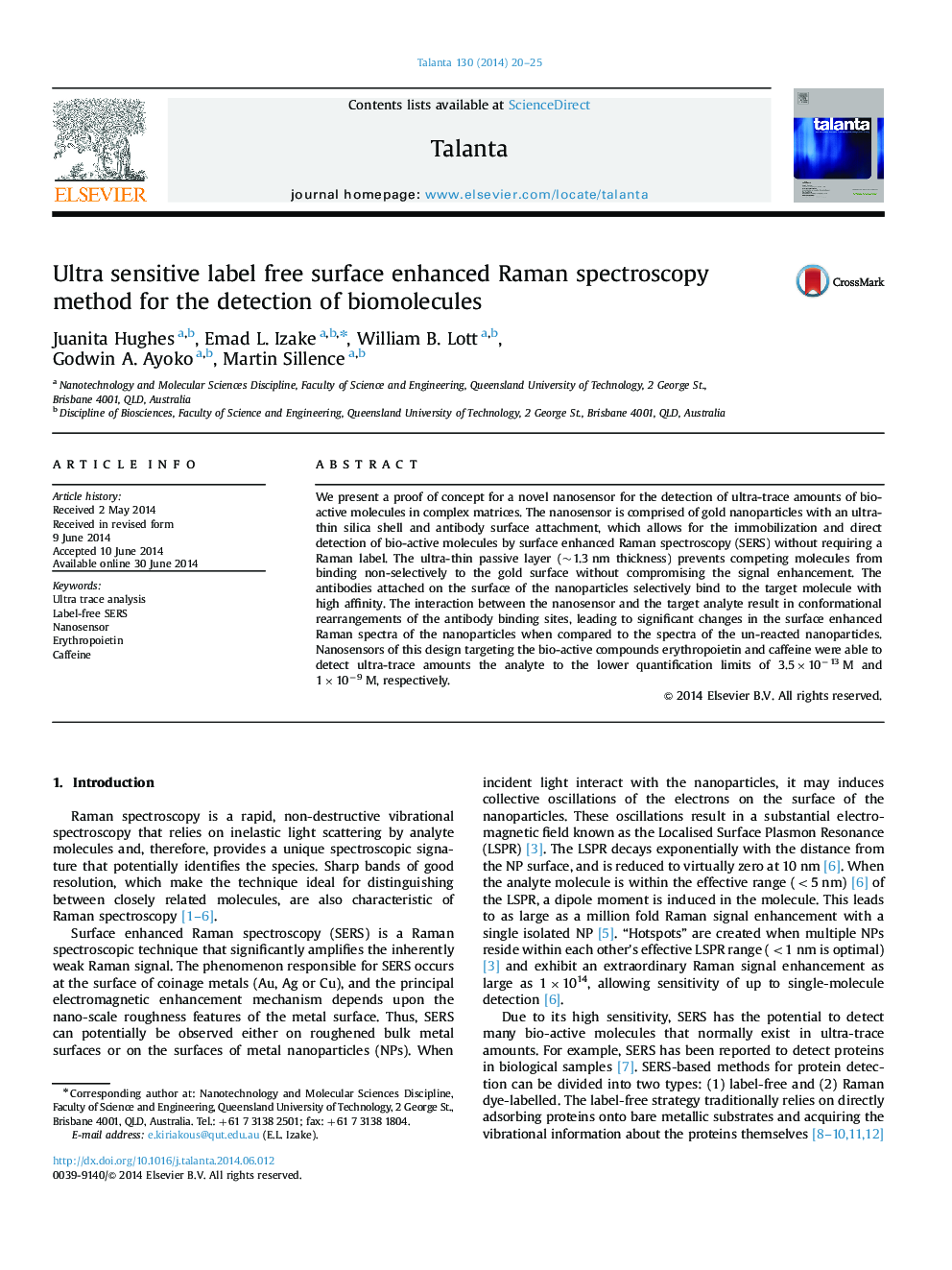| Article ID | Journal | Published Year | Pages | File Type |
|---|---|---|---|---|
| 1243555 | Talanta | 2014 | 6 Pages |
•Ultra senstive nanosensors forthe detection of bio-moleculs.•Ultra traceand rapid selective analysis of EPO and caffiene.•Lable free SERS detection of bio-active compounds.•Low quantification limits of 3.5×10−13 M and 1×10−10 M of EPO and caffiene.•The EPO sensor can screen natural levels of the protein in biological fluids.
We present a proof of concept for a novel nanosensor for the detection of ultra-trace amounts of bio-active molecules in complex matrices. The nanosensor is comprised of gold nanoparticles with an ultra-thin silica shell and antibody surface attachment, which allows for the immobilization and direct detection of bio-active molecules by surface enhanced Raman spectroscopy (SERS) without requiring a Raman label. The ultra-thin passive layer (~1.3 nm thickness) prevents competing molecules from binding non-selectively to the gold surface without compromising the signal enhancement. The antibodies attached on the surface of the nanoparticles selectively bind to the target molecule with high affinity. The interaction between the nanosensor and the target analyte result in conformational rearrangements of the antibody binding sites, leading to significant changes in the surface enhanced Raman spectra of the nanoparticles when compared to the spectra of the un-reacted nanoparticles. Nanosensors of this design targeting the bio-active compounds erythropoietin and caffeine were able to detect ultra-trace amounts the analyte to the lower quantification limits of 3.5×10−13 M and 1×10−9 M, respectively.
Graphical abstractFigure optionsDownload full-size imageDownload as PowerPoint slide
